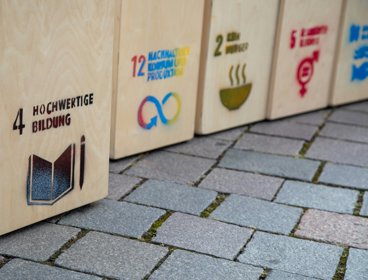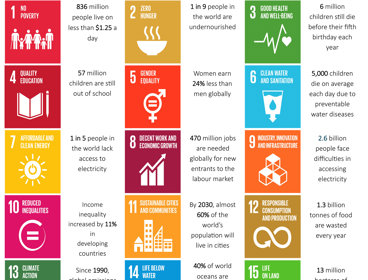Sustainable Development goal five aims to ‘achieve gender equality and empower all women and girls’. This includes recognising and valuing ‘unpaid care work (…) and the promotion of shared responsibility within the household’. In this interview, we spoke to Dr Alice Evans about why women’s employment is rising, but men’s share of care work remains low.
Are there common drivers of women's rising employment globally?
Drivers of female employment vary between and also within nations, so we should be careful about generalising. That said, there are some common trends.
First, in rich countries like the UK, deindustrialisation, demechanisation, deregulation and trade liberalisation have reduced the number and wages of working class men’s jobs in these countries. No longer able to rely on a male breadwinner, many families have become more supportive of women’s employment. But this trend does not hold universally.
Second, there has also been a growth in sectors specifically seeking female employees: in Britain, this includes health and education; in Bangladesh and Cambodia it’s the garment industry.
Third, women are more able to work outside the home due to a lower volume of housework. Increased access to contraceptives has enabled women to have fewer children, and washing machines (and other technologies) have saved time. This makes it easier for women to do a 9-5 job.
Fourth, by seeing women mechanics, managers and doctors, people have increasingly come to recognise their equal abilities in historically male-dominated domains. They also see that other people support and value women’s contributions.
Fifth, feminist movements have campaigned for government policy reforms – like the Equality Act 2010 here in Britain, which legally protects people from discrimination.
There is, of course, significant diversity between the Global North, and overlap with the Global South, but are there particular trends in certain regions?
Yes, for instance, the HIV/AIDS pandemic in Southern Africa contributed to rising female labour force participation because families could not rely on a male breadwinner to survive middle age. This factor is relatively unique to Southern Africa, where the disease burden is high and where – in the 1990s - many people could not afford anti-retroviral drugs to prolong their lives.
Are there some countries where female employment continues to remain low? How can this be explained?
Opinion is divided here. Some blame ‘culture’ and religion. But Michael Ross, Professor of Political Science at University of California, Los Angeles, puts forward a fascinating argument. In the oil-producing countries of the Middle East and North Africa, economic growth is concentrated in male-dominated sectors. When the price of oil is high, it’s cheap for oil-exporting countries to import food and manufactured products. So it makes little economic sense to invest in local agriculture and manufacturing. So jobs here are few and poorly paid. But these are the sectors that employ women. The more lucrative sectors of construction and services are monopolised by men. Men are thus breadwinners.
Observing these gender divisions of labour, many people in these oil-producing countries of the Middle East and North Africa come to assume that women are less competent in socially valued domains. Thus Michael Ross argues the main factor here is not Islam but oil wealth.
It’s a controversial, but very interesting argument – I think.
So, with more women in the workplace what can be done to work towards gender equality?
I’d suggest three things: (1) increase exposure to men cooking, cleaning and caring; (2) policy reforms to make it easier for men to become active parents, e.g. well-paid, fully transferable parental leave; and (3) gender quotas to curb men’s dominance.
People develop their beliefs through observation of the world around them. If they only see men in prestigious positions, they’ll come to assume men are more competent in socially valued domains and more deserving of status. If they never see men doing the washing up, they’ll presume this isn’t normal. So they might be shy to perform such work themselves – worried about being laughed at, concerned it isn’t ‘manly’ – even if they actually really enjoy cooking or caring for relatives.
This isn’t just a job for the Government; it’s something we can all tackle - creatively. To increase exposure and normalise boys and men sharing care work, your school play might feature a male carer or a stay-at-home dad. You can campaign for gender quotas on school committees, to ensure inclusive leadership, and make sure everyone is represented.
It’s a challenge, but an important one!
You can follow Alice on Twitter @_alice_evans
Lesson Ideas
Ask students to research how governments are realising SDG5: providing public services and promoting shared responsibility for care work within the household. What sorts of policies are used? What works? What doesn’t? How do we know? Write these up as case studies and present to the class.
In groups, ask students to identify TV and book characters that challenge gender norms. Were they surprised by these figures? Have they ever heard people talk negatively or positively about such atypical portrayals? Encourage the class to discuss how media representations shape our gendered practices and beliefs.
Reflecting on their school environment, students should consider the gender division of labour and space. Are there any roles or places that are male-dominated? Why is this? Do people question or critique this? If not, why not? How might these divisions be tackled?
Links
-
Evans, A (2016) More women are running the world so why aren’t more men doing the dishes? The Conversation
-
Evans, A (2016) The Decline of the Male Breadwinner and Persistence of the Female Carer: Exposure, Interests, and Micro-Macro Interactions, Annals of the American Associations of Geographers, 106, 5, 1135-1153
-
Evans, A (2016) The Decline of the Male Breadwinner and Persistence of the Female Carer
-
Evans, A (2015) Why is there greater support for gender equality in urban areas, Gender and Feminist Geographies Research Group
-
Ross, M. L (2012) The Oil Curse: How Petroleum Wealth shapes the Development of Nations. Princeton University Press: New Jersey
Alice was interviewed in November 2016
Key Words
Carer
A family member or paid helper who regularly looks after a child or a sick, elderly, or disabled person.
Deindustrialisation
The reduction of industrial activity or capacity in a region or economy.
Gendered division of labour
Gender divisions occur between household tasks, between unpaid and paid work, and within paid work.




